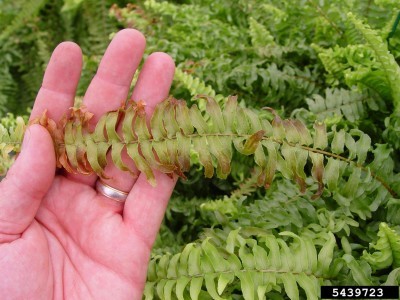






Boston ferns are old-fashioned plants that bring the elegance of turn of the century parlors to the modern home. They put one in mind of ostrich feathers and fainting couches, but their rich green foliage is a perfect foil for any decorating choice. The plant requires plenty of humidity and low light to prevent the Boston fern turning brown. If you have a Boston fern with brown leaves, it might be cultural or simply the wrong site for the plant.
Boston ferns are made for container gardening. As houseplants they are easy to care for and add lush greenery to your home. Boston ferns are a cultivar of the Sword fern. The variety was discovered in 1894 in a shipment of these ferns. Today, many cultivars exist of the fern, which is as popular now as it was in the 19th century. As a foliage plant, the fern can’t be matched, but Boston fern browning on fronds minimizes the attractiveness.
Boston fern browning may be caused by poor soil, inadequate drainage, lack of water or humidity, too much light, excess salt or simply mechanical injury. If your cat tends to chew on the leaves, the tips will turn brown and die. Or, if you fertilize too frequently and don’t leach the soil, the salt build up will make the fern discolor.
Since there are so many possible causes, eliminate the cat and the fertilizer, take a look at where the plant lives and then turn your attention to your care.
If cultural issues aren’t the reason for your Boston fern turning brown, it might need repotting or feeding.
Following these steps should soon have your Boston fern looking its best.
Copyright © www.100flowers.win Botanic Garden All Rights Reserved